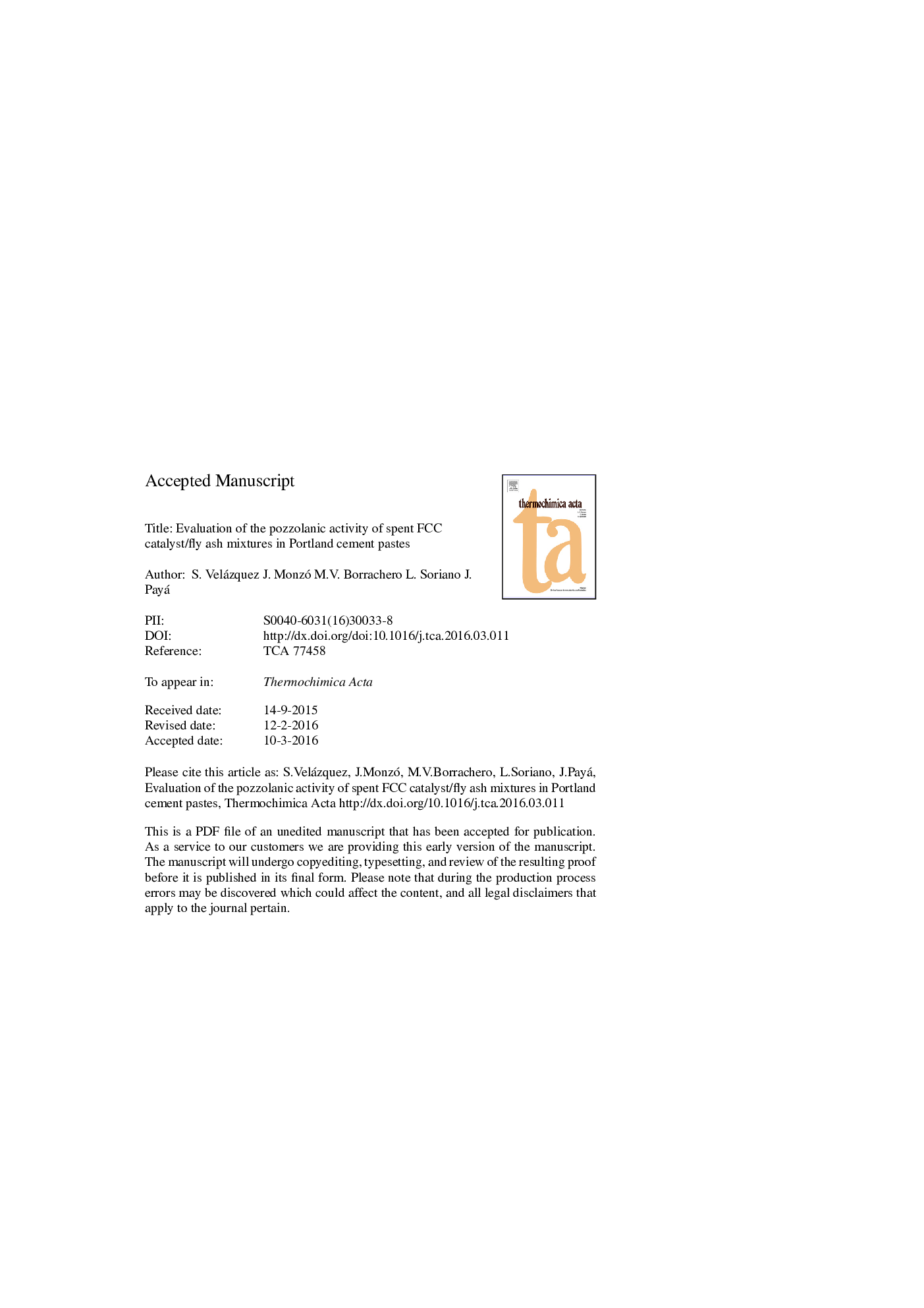| Article ID | Journal | Published Year | Pages | File Type |
|---|---|---|---|---|
| 672761 | Thermochimica Acta | 2016 | 26 Pages |
Abstract
High pozzolanic activity of the residue spent catalytic cracking catalyst (FCC) has been reported by various authors in recent years. However, no report on the lime fixation of this residue when dosed together with other pozzolan has been developed, such material partially replacing Portland cement in the manufacture of hydraulic binders. One of the possibilities is to mixture it with fly ash (FA). This joint replacement provides several advantages in that: 1) Generation of FCC is low compared to other pozzolans including fly ash (FA); 2) The FCC tends to react to short curing times, while the FA does at longer times; 3) The FCC is demanding water, while the FA tends to improve the fluidity of the binder. This paper studies on cement pastes by thermogravimetric analysis of various mixed substitutions FCC:FA, varying the replacing percentage for FCC in the 0-15% range and for FA in the 0-30% range. Evolution of pastes was monitored by means of thermogravimetric analysis on pastes cured for 3-365 days. Products of the pozzolanic reaction were identified by SEM, being some of them cubic crystals (C3AH6 and/or hydrogarnet). By TGA analysis it was observed that when the %FCC is increased in the system, the amount of the calcium aluminate hydrates (CAH) and calcium aluminosilicate hydrates (CASH) also increased. Negative values of fixed lime were obtained due to an acceleration of the hydration of OPC, since the FA particles acted as nucleation sites for the precipitation of hydrated compounds. Fixed rates up to 90% of hydrated lime with substitutions as high as 45% in Portland cement system at one year of curing were reached.
Related Topics
Physical Sciences and Engineering
Chemical Engineering
Fluid Flow and Transfer Processes
Authors
S. Velázquez, J. Monzó, M.V. Borrachero, L. Soriano, J. Payá,
